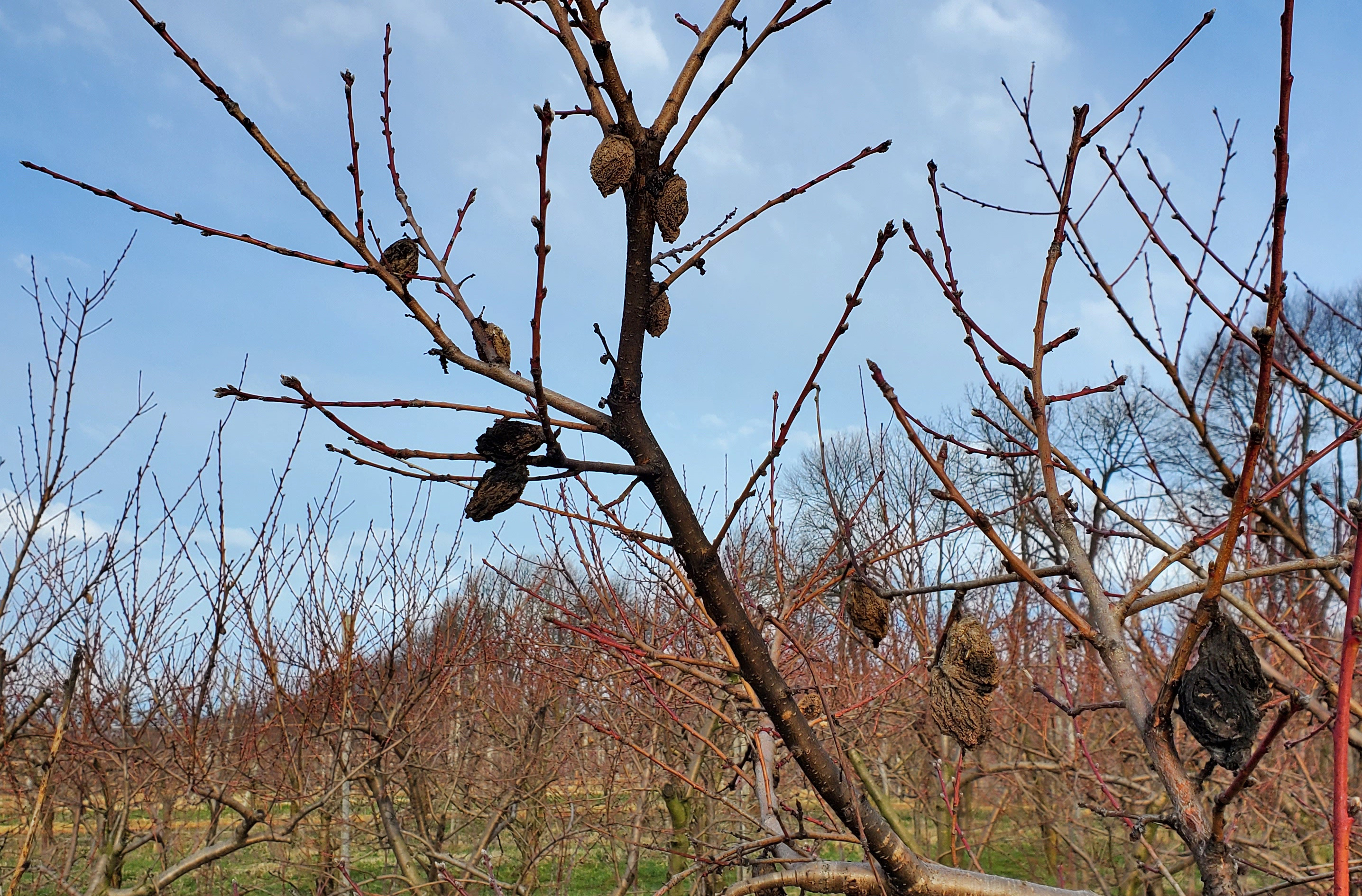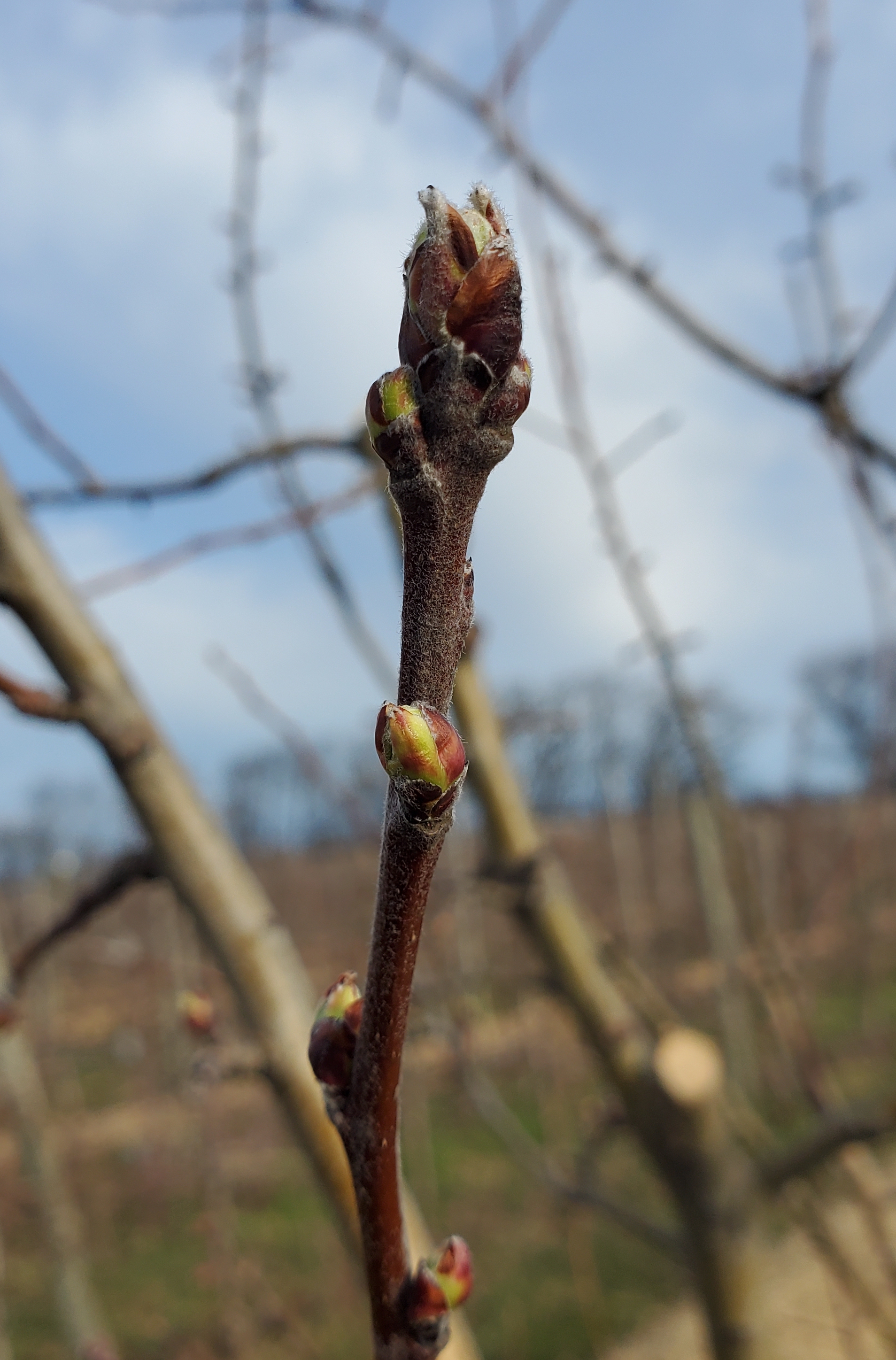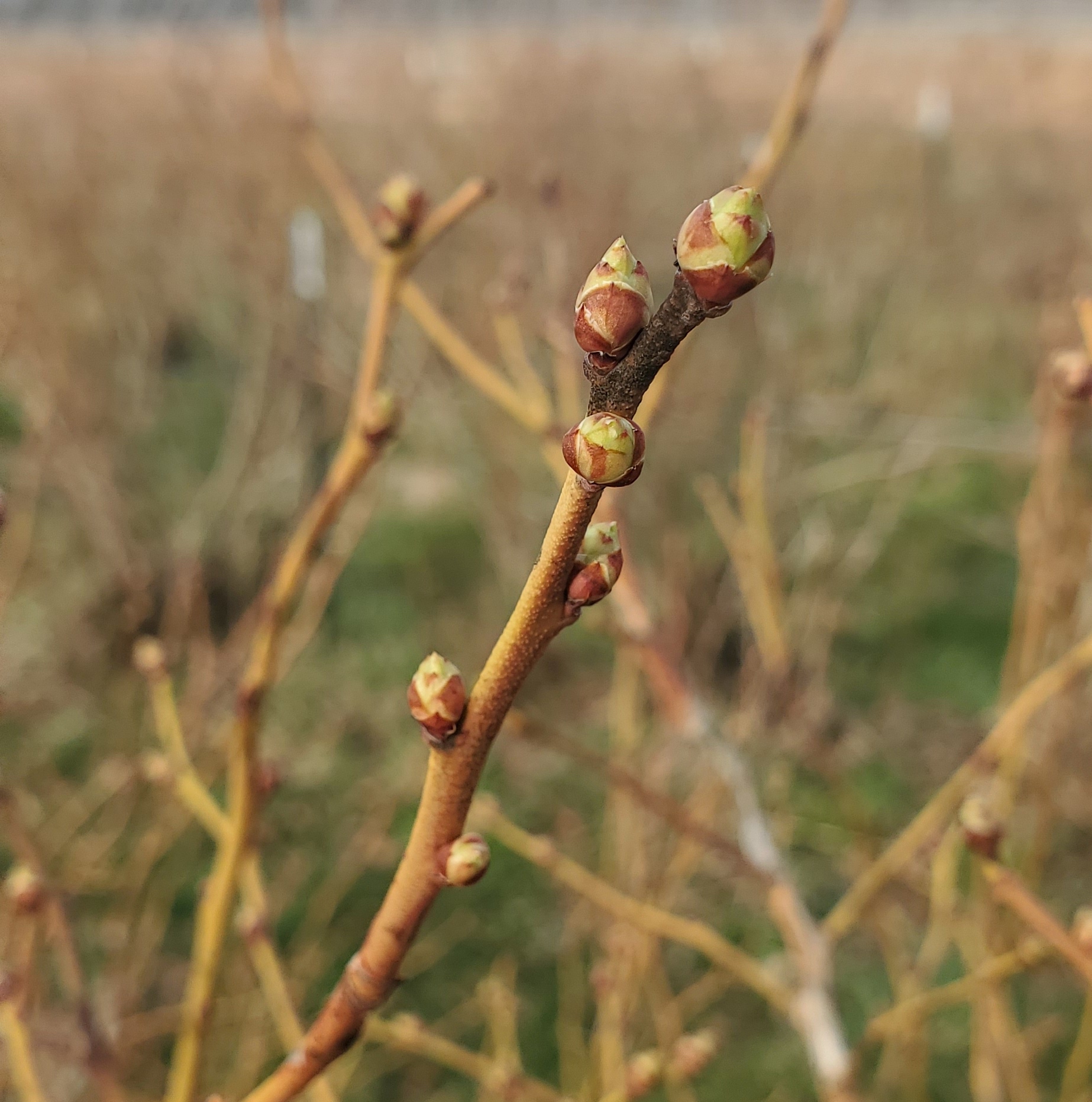Southwest Michigan fruit update – April 4, 2023
This week will be warm with some extreme storm potential on Wednesday. Quick phenology advancement is expected. Be prepared for any disease management sprays if the crop phenology indicates the need.

Weather
Last week started cool with high temperatures in the mid 40s Fahrenheit and lows below freezing. The lowest temperature of the week was on Thursday morning. A warm front on Friday brought warm temperatures and storms. Much of the region saw high temperatures near 60 F and close to an inch of rain. The weekend split the difference with highs in the 50s F and lows just above freezing.
The region saw more degree days last week than the rest of March combined, 25 growing degree days (GDD) base 42 and 6 GDD base 50, respectively.
|
Southwest Michigan GDD summary from March 1 through April 3, 2023 |
|||
|
Station |
GDD 42 F |
GDD 45 F |
GDD 50 F |
|
Benton Harbor (SWMREC) |
49 |
27 |
9 |
|
Lawton (Lawton) |
44 |
22 |
6 |
|
Fennville (TNRC) |
35 |
17 |
5 |
|
Average for the SW region |
46 |
24 |
7 |
|
Average last week |
21 |
8 |
1 |
The forecast for the upcoming week is for higher temperatures and rain. Tuesday and Wednesday will see highs in the mid 60’s F. Thursday and Friday will be the coolest days with highs in the mid 40’s F. Then warmer temperatures will return for the weekend. The lows will be in the mid 30’s F to mid 40’s F except Tuesday night when the cloudy and rainy weather will keep low temperatures in the upper 50’s F. Rain is expected Tuesday and Wednesday, then clear for the rest of the week. With the warm week expected, degree day accumulations since March 1 should double again.
Tree fruit
On March 28-29, temperatures dipped to the high to low 20s F in southwest Michigan. Spot checking in central Berrien County revealed no apparent damage to peach fruit buds. Crop prospects for all tree fruit remains good.
Wet conditions have hampered pruning in orchards with heavier soil.
Apricots and aprium fruit buds are at calyx red with first white tissue expected in a few days.
Peach and nectarine fruit buds are at first calyx green, with some terminal tips showing slight green. Pruning is underway in many orchards. Removal of mummies in the trees during pruning helps with brown rot management. We have had three wetting periods over the past week in Berrien County sufficient for peach leaf curl infections. Infections require 10-plus hours of wetting with temperatures in the range of 46 to 55 F. Treatment now can help suppress additional infections when these weather conditions occur even past bud swell. Low levels of copper also suppress bacterial spot populations.

Cherries are at side green (Montmorency) to green tip (sweet cherry) in Berrien County. Discontinue use of copper sprays for bacterial canker in cherries once green tissue is present to reduce chances of phytotoxicity. Cherries in Michigan generally do not have problems with black knot, although New York and Canadian cherry orchards do have the disease.
In plums, Japanese plum fruit buds are swollen with green tips on some varieties, with European plum fruit buds visibly swollen. Prune out black knot and dispose of the knots by burning or removing them from the orchard. Sanitation is an important step in managing this disease. Typically, spray programs for this disease generally start close to bloom when ascospore release increases.
Apple early blooming varieties Zestar, IdaRed and Macintosh are at silver tip to first green tip, with most others still at silver tip in Berrien County. Scab sprays will be needed to protect against future rains as green tissue emerges. Copper sprays can provide early scab control and fire blight suppression. Using copper fungicides can cause damage to green tissue after tight cluster. Protectants are preferred over systemic fungicides at this time of year for scab control.

Pear (Bartlett) fruit buds are exposed and swollen. Scab management is needed when green tissue is seen.
Small fruit
Grapes are still dormant for most varieties. Some juice grape growers have reported seeing some bleeding of canes while pruning.
Blueberry buds are swollen. Fruit buds are beginning to separate in some early varieties in advanced locations. Growers still have time to apply copper, Sulforix or lime sulfur products to suppress early season diseases.

Strawberries have greened up and new leaves are starting to emerge from the crown. Overwintering mulches should be removed and raked between the rows. Some growers are putting out floating row covers. Growers are looking at early season herbicides to control overwintering weeds. When selecting an herbicide, check the pre-harvest interval (PHI). We are getting to the part of spring where some herbicide PHIs are cutting it close to predicted harvest dates.
Many bramble growers are dormant pruning. In summer bearing raspberries, last year’s primocanes should be headed (cut back) to the desired height and any remaining floricanes from last year should be removed. Fall bearing raspberries should be cut or mowed to the ground. Lime sulfur treatments for anthracnose can still be applied.
Currants are beginning to green up. Leaves are emerging and starting to unfurl in some locations.
Upcoming meetings
Our regular southwest Monday fruit IPM updates will once again be a hybrid format. The meetings will be held in-person with virtual attending also available online. Our first meeting is Monday, April 10, at 5:30 p.m. You need to register to receive the Zoom link and password for these meetings. The webinars are free and one pesticide applicator credit is available for each meeting. The same Zoom link will be used with all the Monday meetings—you only need to register once. Before the meetings, Cheyenne Sloan will have fruit spray guides for sale and will have forms available for tax-exempt individuals.
Join the MSU Extension blueberry team the morning of April 5 for our first spring blueberry webinar! Sign up here.
This work is supported by the Crop Protection and Pest Management Program [grant no 2021-70006-35450] from the USDA National Institute of Food and Agriculture. Any opinions, findings, conclusions, or recommendations expressed in this publication are those of the author(s) and do not necessarily reflect the view of the U.S. Department of Agriculture.



 Print
Print Email
Email
